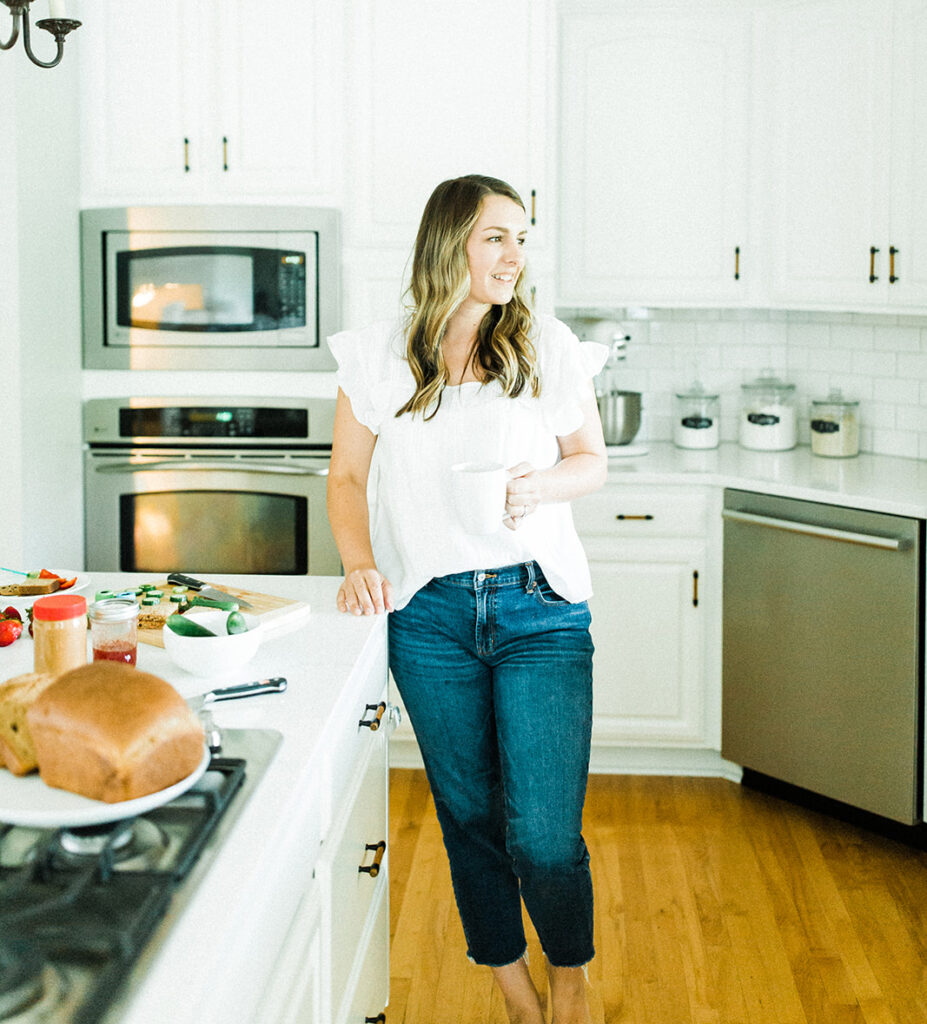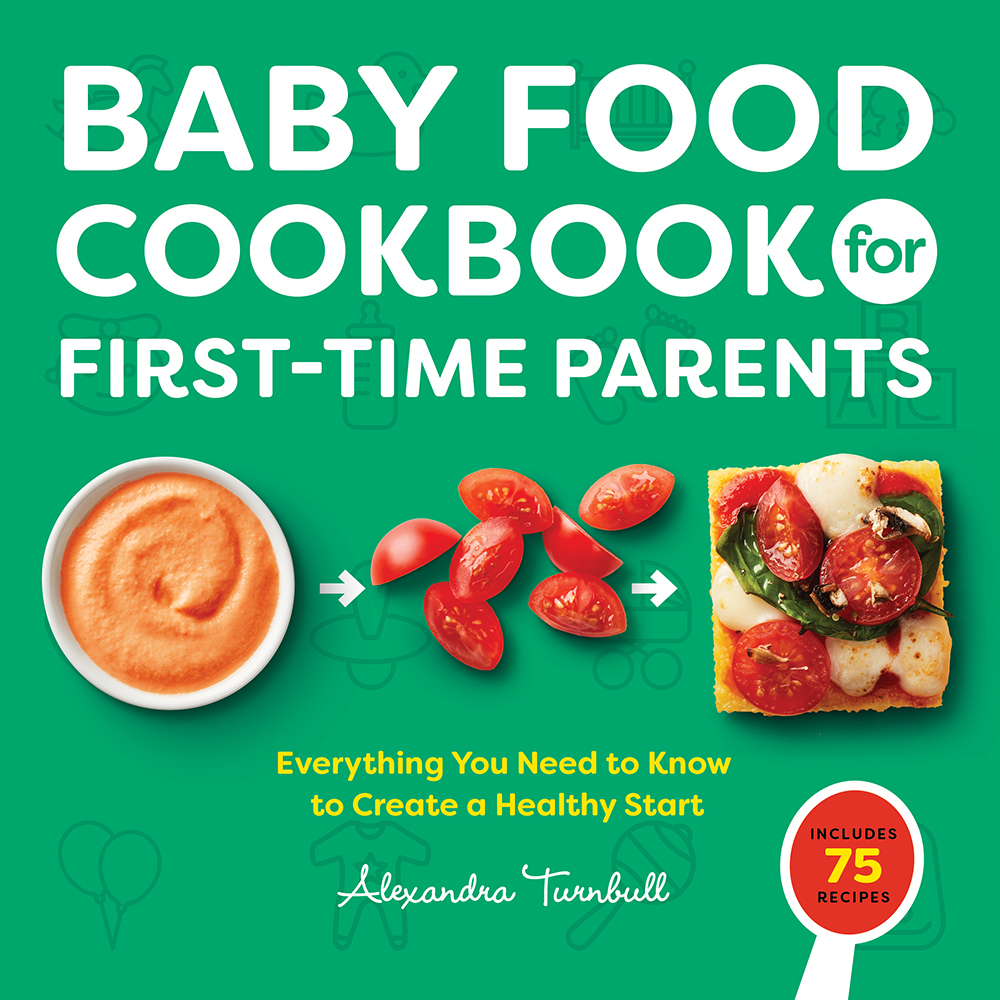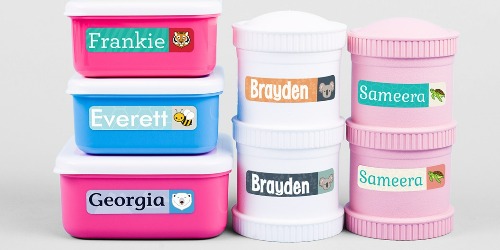Do you remember what your very first food was? Likely not, but if you asked your parents, they’ll likely respond with “rice cereal.”
Infant cereals tend to be a popular first option mostly because it’s just what everyone’s always done. They also are an easy texture for babies to tolerate, but most importantly, they are fortified with iron – a nutrient to prioritize early on. But you don’t HAVE to start with infant cereals. Feel free to incorporate them into the mix, but prioritize variety over one specific food. When introducing an infant cereal, I suggest trying varieties with grains such as quinoa, oatmeal and even barley. My Baby Food Cookbook for First-Time Parents incorporates each of these grains into easy to make recipes you can safely and confidently feed your baby. Try the Nourishing Quinoa or Oat-alicious Cereal – both simple recipes with only two ingredients.
While infant cereals can definitely have a place at the table for your baby, I have six other foods that are easy to implement in either a puree or soft table food option that also prioritize key nutrients your baby needs. Remember, formula or breastmilk will continue to be your baby’s main source of nutrition through one year of age.
Table of Contents
Avocado
Avocados, which are actually a fruit believe it or not, are high in heart healthy fats making them a great choice to promote brain development. Avocado can easily be introduced to your baby with either the traditional puree approach or baby led weaning. Give my Creamy Avocado Puree from my Baby Food Cookbook for First-Time Parents a try. Prioritize self feeding by either pre-loading the puree onto an easy to hold utensil like the Eztot Lil Dippers or take a slice of ripe avocado, roll in ground flax or infant cereal and let them try themselves. No matter the approach, avocado is a great go to for one of the many first foods you should introduce to your baby.
CREAMY AVOCADO PUREE
- 3 ripe avocados, pitted
- Scoop the avocado flesh into a medium bowl. Discard the skins. Use a fork or potato masher to mash the avocado until smooth.
- Serve immediately, refrigerate in an airtight container for up to 3 days or transfer to an ice cube tray and freeze for up to 3 months.
Beef
Beef is one of the best and most absorbable forms of iron (heme iron), making it a great option to introduce to your baby from the get go. Iron is an important nutrient to prioritize and consider when choosing foods for your baby. It is essential for producing hemoglobin, a protein that helps transport oxygen throughout the body. A baby’s iron stores start to run out around six months of age, therefore it’s essential that complementary foods contain iron. Start with a simple puree like my Savory Beef and Sweet Potato Puree.
SAVORY BEEF AND SWEET POTATO PUREE
- 8 ounce beef sirloin, roughly cut into cubes
- 2 cups water
- 1 medium sweet potato, peeled and roughly chopped
- 2 thyme sprigs or 1 teaspoon dried thyme
- In a medium saucepan over medium heat, combine the beef, water, sweet potato and thyme and bring to a simmer. Reduce the heat to medium-low and continue to simmer, covered, for 20 to 30 minutes or until fork-tender.
- Discard the thyme sprigs and allow the ingredients to cool slightly. Remove any extra fat, cartilage, or bones from the beef. With a slotted spoon, transfer the beef and sweet potato to a blender with about 1/2 cup of the cooking water. Blend until smooth, adding more cooking water as needed.
- Cool and serve, refrigerate in a sealed container for up to 3 days, or transfer to an ice cube tray and freeze for up to 3 months.
*Try cutting the beef into strips and offer them to your baby to munch on and suck the juices from. This still provides them with some of the nutritional benefits. The sweet potatoes can be cut into wedges and roasted extra soft for easy self-feeding.
Nut Butter
Nuts are a great source of heart healthy fats and will even contain some iron as well. Research now suggests that common allergens, such as peanuts and tree nuts, should be introduced early and often. Yes, these are safe to offer your baby from the get go too, just don’t offer them a whole nut – this would be a choking hazard. Instead try my Peanut Buttery Puree and preload on a spoon or spread a thin layer on a 1/2 inch strip of toast the length of your finger for easy self feeding. Most allergic reactions will occur within 15 minutes. Start with a small amount, wait a few minutes and if no reaction occurs continue. Learn more about introducing allergens in my Baby Food Cookbook for First-Time Parents.
PEANUT BUTTERY PUREE
- 2/3 cup creamy, unsalted natural peanut butter
- 1 1/3 cups breast milk, formula, or water
- In a small bowl, combine the peanut butter with the breast milk, formula or water. Mix until well combined.
- Serve immediately, refrigerate in an airtight container for up to 3 days or transfer to an ice cube tray and freeze for up to three months.
Whole milk yogurt
Another great high-fat option to promote brain development is whole milk yogurt. Choose plain varieties to avoid the unnecessary added sugar. Simply spoon feed, pre-load onto a utensil for them or step it up a notch with my Baby Guacamole and combine it with other great ingredients for more flavor. Another great reason to incorporate plain yogurt as one of the first foods is because it is made from milk, a common allergen, which should be introduced early and often as evolving research now suggests.
BABY GUACAMOLE
- 1 small ripe avocado, halved and pitted
- 1 teaspoon minced fresh cilantro (optional)
- 1 tablespoon plain whole-milk yogurt
- 1 lime
- Scoop out the avocado flesh and put it into a small bowl. Discard the avocado skins. Add the cilantro (if using) and yogurt to the avocado.
- Using a fork or potato masher, smash and mix until a chunky puree texture is achieved.
- Give the lime a quick roll on the countertop, then halve and squeeze the juice of one half over the mixture (reserve the remaining half for another use). Stir, then serve on a pre loaded spoon or spread on a 1/2 inch strip of toast.
Sweet Potato
Sweet potatoes are a great option to introduce as one of the first foods to your baby and can be an easy vegetable to sell with their hint of sweetness. Sweet potatoes contain Vitamin C, which can help increase how much iron your baby absorbs. Sweet potatoes are easy to mash into a puree or roast for an easy to pick up soft table food for baby led weaning. My Baby Food Cookbook for First-Time Parents has several simple recipes that utilize sweet potatoes such as My Sweet Lil’ Potato Puree and an upgraded combination that incorporates nut butter for exposure to common allergens and a boost of iron.
Egg
Eggs are one of the easiest table food options to feed your baby are are great because they contain choline, an essential nutrient that supports brain development. Our bodies cannot make choline, therefore we must get it from the foods we eat. The soft texture of eggs makes it easy for your baby to manage. Eggs are also a common allergen, so introducing early and often can help decrease the odds of developing food allergies. Not sure how to introduce eggs to your baby? Try a simple recipe like my Egg-Cellent Asparagus Frittatas from my Baby Food Cookbook for First-Time Parents. These are easy for your baby to hold onto and feed themselves. Less work for you, leaving you more time to eat your meal while it’s still hot.
EGG-CELLENT ASPARAGUS FRITTATAS
- 1 teaspoon olive oil
- 3 large eggs
- 2 tablespoons grated cheddar cheese
- 1/4 cup diced asparagus
- Preheat oven to 375F. Grease 12 wells of mini-muffin tin with olive oil.
- Crack the eggs into a medium bowl and whisk. Whisk in the cheese. Add the asparagus and stir.
- Pour the mixture into the muffin cups until each is about two-thirds full.
- Bake for 12 to 14 minutes.
- Serve once cooled, refrigerate in an airtight container for up to 3 days, or freeze for up to 3 months.
*Make in mini muffin tins, or use these silicone cupcake liners to make in a regular size muffin tin. Just double the cooking time.
Again, there’s no one perfect food to first introduce your baby to, but rather something you feel comfortable trying. Overall variety will be key and remember, formula or breast milk will continue to be their main source of nutrition through the first year of life. Enjoy watching your baby try new flavors, textures and foods and help create a positive relationship around mealtimes with a variety of foods, rather than focusing on just one.





